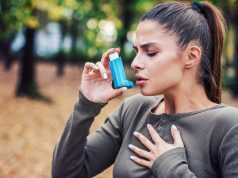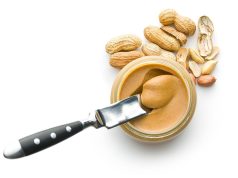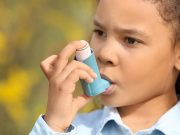Delirium Risk Increased for Seniors Prescribed First-Generation Antihistamines
Odds of delirium up 41 percent for patients admitted to physicians in the highest versus lowest quartile of first-generation antihistamine prescribing
Inhaler-Related Emissions Increased 24 Percent From 2014 to 2024
87 percent of total emissions were accounted for by albuterol, budesonide-formoterol, fluticasone propionate inhalers
Child’s Atopic Dermatitis Linked to Maternal Depression Scores
Association stronger among mothers from lower socioeconomic backgrounds managing severe child AD in early childhood
California to Require Food Allergen Labels on Menus by 2026
Under the new law, menus must identify items containing the most common allergens
Intervention Boosts Pediatrician Adherence to Guidelines for Early Peanut Introduction
Significantly increased adherence in both high- and low-risk children supports broader dissemination, authors say
Suicide Counts in a County Increase as Pollen Levels Rise
On days with highest pollen count, individuals with known mental health condition or treatment have 8.6 percent higher incidence of suicides
Intranasal Adrenaline Offers Viable, Needle-Free Option for Anaphylaxis
Intranasal adrenaline demonstrated comparable or faster absorption compared with intramuscular treatment
Rates of Physician Attrition From Clinical Practice Have Risen Since 2013
Rates of attrition up for male and female physicians, in rural and urban settings, across specialties, across geographic regions
Budesonide-Formoterol More Effective Than Salbutamol for Preventing Asthma Attacks in Children
Similar safety profile seen in children with mild asthma aged 5 to 15 years
Allergic Rhinitis, Hearing Loss Linked to ADHD in Children
Stronger association seen for patients with both hearing loss and allergic rhinitis than for those with either one alone



















